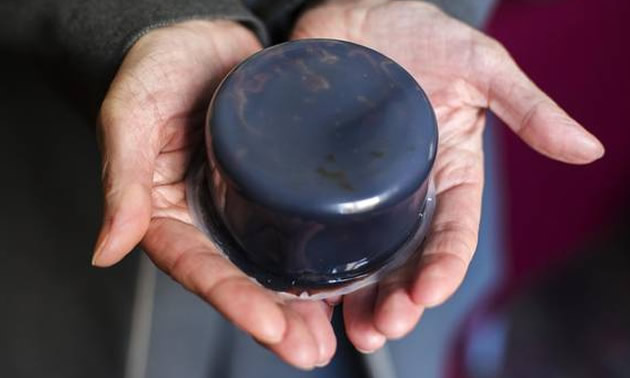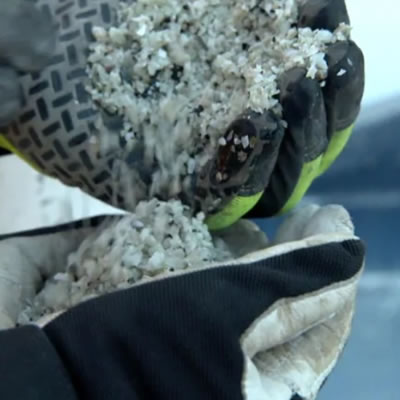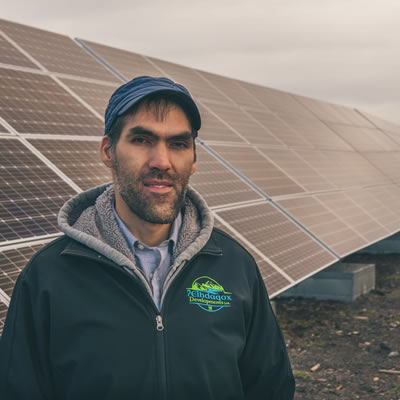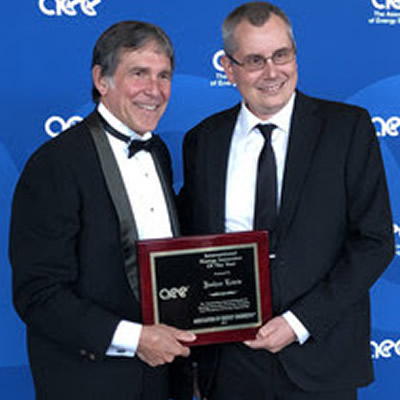“CanaPux” – converting crude oil to solid pellets touted by CN

This Globe and Mail photo by Michelle Sui shows what a CanaPux of bitumen would look like. — Photo: Michelle Sui/Globe and Mail newspaper
Will CanaPux help transport oil sands bitumen safely to market by rail? It sounds like CN Rail is betting on the new technology to be a safe alternative to shipping oil in crude liquid form.
According to the Globe and Mail newspaper, CN, Canada’s largest railway has filed a patent application for a new technology that turns bitumen—the heavy crude produced at the oil sands—into a mostly solid dry good, by mixing and wrapping it with polymer. Then in the event of an accident, the packets would not explode, leak, or sink in water, the railway believes.
The newspaper report further explained, “Once the pellets reach a refinery, heating separates the bitumen and polymer mixture, along with their polymer casing. The tablets are also designed to absorb the weight of being stacked on each other.”
“It has to handle a lot of different forces,” said James Auld, senior manager of corporate development at CN, told the Globe and Mail in the interview.
“Crude-oil shipments by rail rose sharply six years ago, driven by a lack of pipeline space in North America. The increase was spurred by rising petroleum production in new oil fields that lacked pipelines, particularly the Bakken Formation that touches parts of North Dakota, Montana, Saskatchewan and Manitoba," reported the newspaper.
“If spilled into the ocean, the buoyant pellets—dubbed CanaPux—can be retrieved by vacuuming them up. On land, they can be picked up by hand, or with machinery, CN added in the article.”




